Drinking Fountains and More
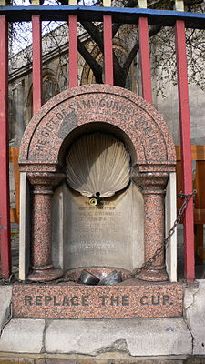
This gorgeous little drinking fountain is one of the first modern fountains to be built. It was opened on 21 April 1859 which makes it 160 years old this April. It was originally located on Holborn Hill on the railings of the church of St Sepulchre-without-Newgate on Snow Hill, London and paid for by Samuel Gurney who was a banker, member of parliament and one of the founders of The Metropolitan Drinking Fountain and Cattle Trough Association which undertook to provide free drinking water to the people of England. The fountain was moved in 1867 when the Holborn Viaduct was built but reinstated in 1913 where it remains.
What is amazing is that when the fountain was erected and declared operational for the first time in 1859 thousands of people gathered to watch.
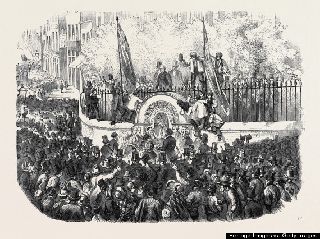
New York installed its first drinking fountain just a few months after London but it took until 1880 for fountains to really take off in the city. The Temperance associations supported their use believing the water fountain would help reduce the amount of alcohol people drink!
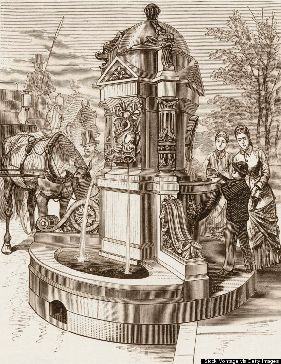
Fountains have been around for a very long time: The Sumerians, the Egyptians, the Greeks all constructed various means of collecting and storing water for human and animal use. This beautiful elephant head once formed part of a Hellenistic fountain and is now on show in the Pergamon museum (Berlin).
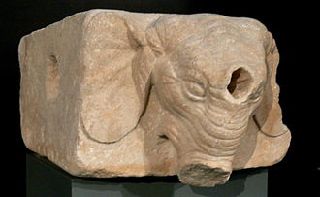
Most of us learnt all about Roman Plumbing at school and how the Ancient Romans built an extensive system of aqueducts to provide water for the fountains and baths of Rome. The Roman engineers used lead pipes instead of bronze to distribute the water throughout the city. The excavations at Pompeii, which revealed the city as it was when it was destroyed by Mount Vesuvius in 79 AD, uncovered free-standing fountains and basins placed at intervals along city streets, fed by siphoning water upwards from lead pipes under the street. The excavations of Pompeii also showed that the homes of wealthy Romans often had a small fountain in the atrium, or interior courtyard, with water coming from the city water supply and spouting into a small bowl or basin. (Wikipedia)
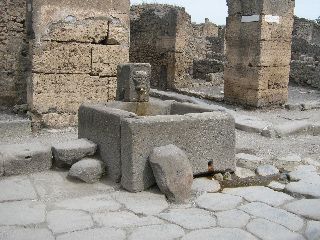
Nowadays, drinking fountains go by a variety of nomenclature including H20 Refreshers, acqua coolers, bubbler, refill station! And as the ban the bottle campaign revs up drinking fountains are being reborn all over the world. You would be tempted to think that the modern versions would be very functional and mundane: no longer a work of art. Not necessarily so, as you see below. This artistic drinking fountain situated in Hyde Park, London was unveiled in 2009.
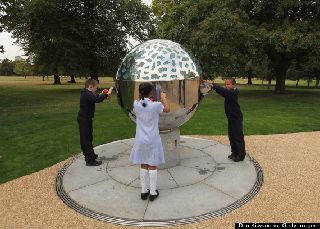
I can't leave drinking fountains without a quick mention of public horse troughs which are of course no longer required but some remain, reminding us of their importance in times gone past. This one I believe is in Summit New Jersey and we will have to ask Chris of New York if he has seen it.
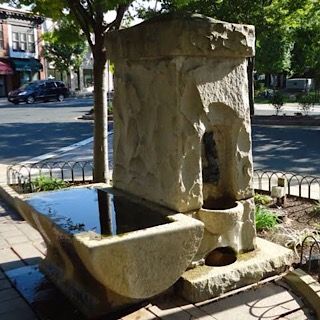
Fortunately Bird Baths have remained as part of our garden settings and can be as creative as your imagination is wide!
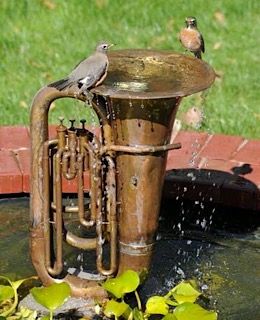
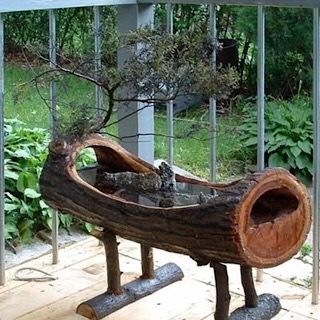
Whilst out on my walk this morning I captured (if somewhat at a distance for fear of scaring away the cockies) a pair of Major Michell's having a drink from a bird bath in a garden.
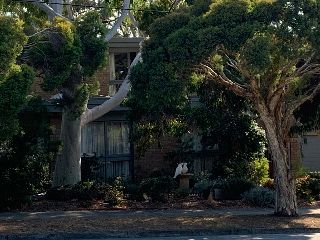
And so, can we categorise a drinking fountain as a work of art? Even though it has to function within the purpose for which it was built so long as it harmonises with its surroundings and is an attractive structure with evidence of craftmanship from a mason, metal worker, carpenter I am happy to include them in the wide world of artistic structures.
The Metropolitan Free Drinking Fountain Association it changed its name to include cattle troughs in 1867, to also support animal welfare. In 2011, as the Drinking Fountain Association, it began to support the Find-a-Fountain campaign to map the UK's drinking water fountains.(Wikipedia)
Tomorrow we will look at some of the most glorious Water Fountains in the world- all of which are definitely works of art.
